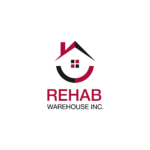Market data indicates that the drastic increase in demand for single-family rental properties isn’t going anywhere anytime soon—a trend that is driving rent costs exponentially higher, particularly in the highest price brackets. This latest development in the real estate industry has prompted investors to flood the market following their brief hiatus once again amidst the fallout of the COVID-19 pandemic. Understanding the market dynamics behind this latest industry trend is key to developing a successful and sustainable long-term investment strategy. The experts at Rehab Warehouse, Inc. have compiled the following break-down of the factors responsible for the rising demand for single-family rental properties to inform your next investment move.
Rising Rent
The median national rent price increased 9.3% in August, year over year, a significant bump from the 2.2% year over year increase recorded last year. This is the first instance in the post-pandemic era in which every major metro housing area registered positive rent growth. Miami topped the charts with a 21% increase, closely followed by Phoenix and Las Vegas, whose average rental prices increased 19% and 15%, respectively.
Several convergent economic factors are fueling this unprecedented boom in single-family rent prices. Increasing consumer confidence has resulted in substantially higher levels of demand on both sides of the equation—with tenants and buyers alike exhibiting increased transactional activity. The combination of renters’ expressed preference for more square footage and an extremely reduced housing inventory is convincing potential homebuyers to consider renting homes as an alternative housing solution. This trend has placed notable strain on the collective single family rental market.
The potentially lucrative return on investment has motivated investors to hurriedly acquire and develop increasing numbers of rental properties. Over the course of this year, there have been approximately 45 announcements equating to over $30 billion in resources earmarked for the U.S. rental housing market. There are a number of factors fueling this dramatic uptick in investor demand, including:
- Global bond yields have plummeted to unprecedented lows, and investors require yield in order to sustain business
- Inflation levels are risking, and the majority of investors consider the rental market as a hedge against this economic trend
- Record-breaking rent costs are correlated with equally high occupancy levels
- Historical market data indicates that tenants are willing to pay high rents in newer developments professionally managed by experienced landlords
For rental properties in the lower price brackets—those that weigh in 75% or less than the geographical median—increased by 7.1% in August year over year, which is a growth of 4.7% over the preceding year. Rental homes in the premium price range—or 125% or more than the geographical median—increased 10.5% year over year, representing an 8.2% annual growth.
Seize the Opportunity
Although the aggregate number of home sales declined somewhat in August, investors constituted a more significant share of real estate transactions in that month than they did a year ago according to data supplied by the National Association of Realtors. At the same time, first-time homebuyers, who before had comprised approximately 40% of all property deals, were at only 29%, the lowest portion of market activity in over ten years. Listing prices are continuing to climb, which subsequently impacts affordability and drives the overall demand for rental options as would-be buyers reevaluate their financial status and spending power.
Don’t miss out on this opportunity! Rehab Warehouse Inc. takes pride in providing efficient and flexible financial solutions to real estate investors—empowering them to act on time-sensitive transactions without having to worry about having the capital they need when they need it. Contact us today to learn more about how we can assist you in tapping into the single-family rental market surge.

